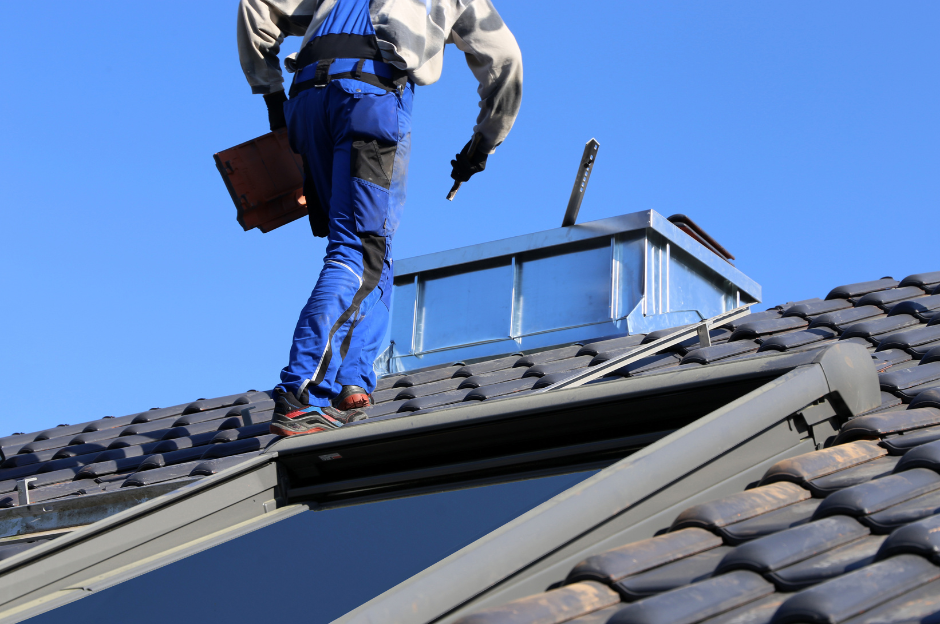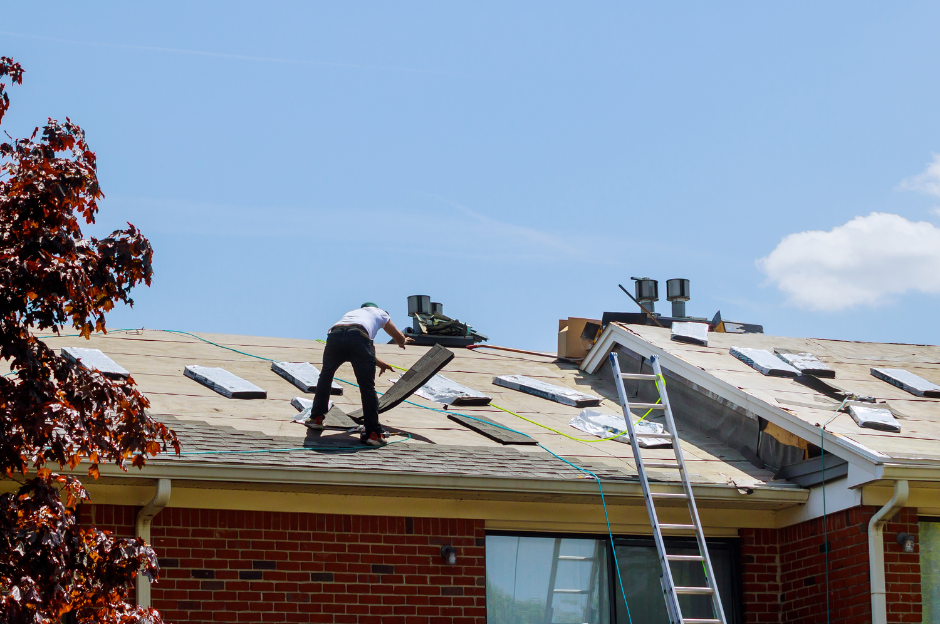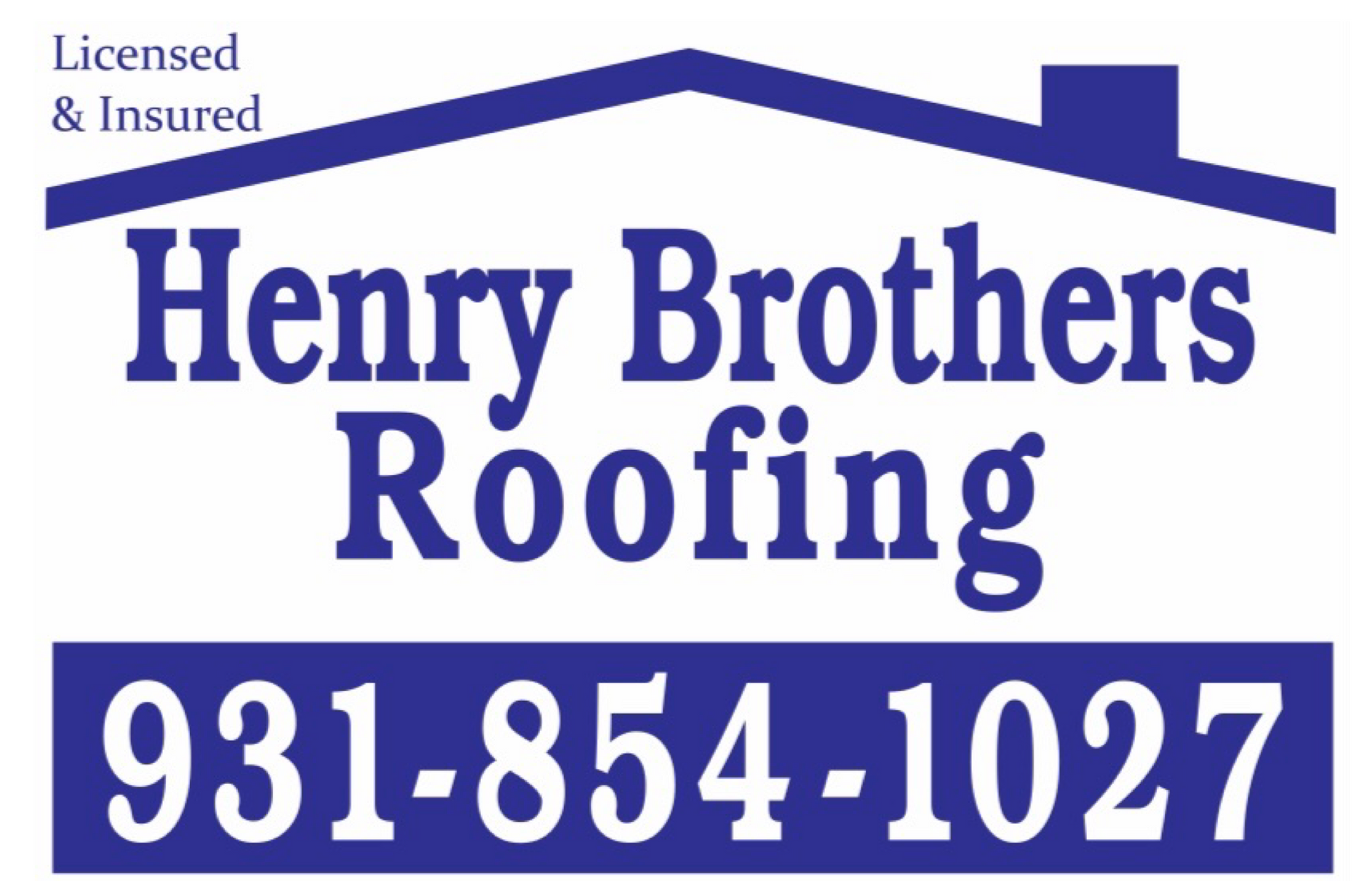Investing in Quality: The Long-Term Benefits of Premium Roofing Solutions
December 12, 2024

When it comes to protecting your home, business, or property, the roof plays a pivotal role. It shields you from the elements, adds to the curb appeal of your property, and ensures your investment is safeguarded for years to come. While it may be tempting to opt for budget-friendly roofing options, investing in high-quality, premium roofing solutions offers significant long-term benefits that far outweigh the initial costs. In this blog post, we will explore why investing in a premium roof is one of the best decisions you can make for the longevity, safety, and value of your property.
What Defines Premium Roofing?
Before diving into the long-term benefits of premium roofing solutions, it’s important to define what makes a roof "premium." Premium roofing materials are typically more durable, energy-efficient, and aesthetically appealing than standard options. They may come with superior warranties, advanced technologies, and eco-friendly features that enhance both the performance and sustainability of your roof. Examples of premium roofing materials include:
- Slate Tiles: Natural stone with excellent durability and aesthetic appeal.
- Metal Roofing: Known for longevity, energy efficiency, and resilience against extreme weather.
- Wood Shingles and Shakes: Provide a classic, natural look with proper maintenance.
- Clay and Concrete Tiles: Durable, fire-resistant, and energy-efficient.
- Synthetic Roofing: Made from composite materials, offering the look of traditional options with better performance.
Now that we understand what qualifies as premium roofing, let’s explore the benefits it offers in the long run.
1. Longevity and Durability
One of the most significant advantages of investing in a premium roofing system is its longevity. Quality roofing materials are designed to withstand the test of time, providing long-lasting protection for your property.
Longevity: Premium materials like metal roofing, slate tiles, and clay tiles can last anywhere from 50 to 100 years, depending on the material. In contrast, cheaper roofing options such as asphalt shingles typically need to be replaced every 15-30 years.
Durability: Premium roofing systems are engineered to handle harsh weather conditions, including heavy rain, high winds, snow, and extreme temperatures. For instance, metal roofs are known for their ability to resist hail, while slate tiles are virtually impervious to mold and rot. This durability means fewer repairs and replacements over time, saving you money in the long run.
2. Enhanced Protection Against the Elements
A high-quality roof provides better protection against the elements, ensuring your property stays dry, comfortable, and safe. While cheaper roofing systems may offer adequate protection for a few years, they often fall short when it comes to extreme weather conditions. Premium roofing materials, on the other hand, are designed with resilience in mind.
Weather Resistance: Materials like metal and concrete tiles are highly resistant to extreme weather, including hurricanes, hailstorms, and heavy snow. In areas prone to severe weather, this added protection is invaluable.
Waterproofing: Premium roofing options often feature advanced waterproofing systems that help prevent leaks and water damage. For instance, metal roofing systems are often coated with special sealants that prevent water from infiltrating, while slate tiles have a natural ability to shed water efficiently.
Fire Resistance: Many premium roofing materials are fire-resistant, such as clay tiles, metal roofing, and concrete tiles. These materials help prevent the spread of fire in case of an emergency, offering enhanced safety for your home or business.
3. Energy Efficiency and Reduced Utility Costs
A premium roof can help reduce your overall energy consumption, leading to lower utility bills. Many high-quality roofing materials have energy-efficient properties that reflect sunlight, reduce heat absorption, and maintain comfortable indoor temperatures. This is particularly beneficial in regions with hot climates or extreme seasonal temperature variations.
Cool Roof Technology: Some premium roofing materials, such as reflective metal roofs, are designed with “cool roof” technology. These roofs reflect more sunlight and absorb less heat, keeping your home cooler in the summer and reducing the need for air conditioning.
Improved Insulation: Insulation is a key component of energy efficiency, and premium roofs often come with better insulation properties. Materials like clay tiles and synthetic slate provide natural insulation, keeping your home warm in winter and cool in summer, reducing the need for artificial heating or cooling systems.
Lower HVAC Costs: With improved insulation and heat resistance, a premium roof can help reduce your reliance on heating, ventilation, and air conditioning (HVAC) systems. Over time, this results in significant savings on energy bills.
4. Aesthetic Appeal and Curb Appeal
A premium roof not only offers functional benefits but also enhances the overall aesthetic appeal of your property. The right roof can complement your home’s architectural style, making it more attractive to potential buyers and boosting your property’s curb appeal.
Visual Appeal: Premium roofing materials such as slate, clay, and cedar shakes provide a natural, timeless beauty that adds elegance and character to your home. These materials are available in various colors, textures, and styles, allowing you to choose a roof that complements your design preferences.
Higher Property Value: A high-quality roof is a significant selling point for prospective buyers. Homes with premium roofing systems often have a higher resale value because buyers know they won’t have to replace the roof for many years. Additionally, properties with aesthetically pleasing roofs can attract more interest in the competitive real estate market.
Enhanced Neighborhood Appeal: Installing a premium roof can help improve the look of your entire neighborhood. As more homeowners invest in quality roofing, the overall appearance of the community becomes more appealing, which can positively affect property values.
5. Cost Savings Over Time
While premium roofing systems often come with a higher upfront cost, they can save you money in the long run due to their durability, energy efficiency, and low maintenance needs. Here are some ways a premium roof helps save money:
Reduced Repair Costs: With a high-quality roof, you’ll experience fewer repairs and maintenance needs over time. Materials like metal, slate, and clay are highly resistant to damage, reducing the need for costly fixes and replacements.
Lower Insurance Premiums: Many insurance companies offer discounts for homes with premium roofing systems, as these roofs are more likely to withstand severe weather events. This can lead to lower homeowner’s insurance premiums.
Increased Property Value: As mentioned earlier, premium roofing can increase the value of your property, providing a higher return on investment if you decide to sell.
6. Eco-Friendly Features
As more homeowners become concerned about sustainability and the environment, eco-friendly roofing options are gaining popularity. Premium roofing materials often come with environmentally friendly features that help reduce your carbon footprint.
Recyclability: Many premium roofing materials, such as metal and certain synthetic options, are recyclable at the end of their lifespan. This helps reduce waste in landfills and contributes to sustainability.
Energy-Efficient Roofing: Roofing systems that reduce energy consumption contribute to a lower overall environmental impact. By improving your home’s energy efficiency, premium roofing solutions help reduce the demand on power plants, leading to a reduction in greenhouse gas emissions.
Solar Integration: Premium roofing systems, such as certain metal roofs, can be integrated with solar panels. These roofs are designed to support solar energy installations, making it easier to harness renewable energy for your home.
7. Peace of Mind and Long-Term Warranty
When you invest in a premium roofing solution, you are often provided with a robust warranty that covers both materials and labor. These warranties can range from 30 to 50 years or more, depending on the manufacturer and material. This peace of mind ensures that your roof is protected against defects and potential issues for decades to come.
Reduced Risk of Issues: With a premium roof, you’re less likely to encounter frequent problems like leaks, shingles blowing off, or tiles cracking. The long-lasting nature of these roofs means you won’t have to worry about constant repairs or replacements.
Comprehensive Coverage: Premium roofing systems typically come with comprehensive warranties that cover defects, labor, and even weather-related damage. This can save you money on unexpected repairs and provide peace of mind knowing that your roof is well-protected.
Henry Brothers Blog

Multi-family buildings pose unique challenges for roofing—requiring durable, efficient, and cost-effective solutions that serve multiple households simultaneously. Selecting the right system and partner can significantly impact long-term maintenance and energy bills. Common Roofing Challenges in Multi-Family Properties Large surface areas Multiple penetrations (vents, HVAC units) Noise and disruption during installation High foot traffic for maintenance Energy efficiency Efficient Roofing Materials TPO (Thermoplastic Polyolefin): Lightweight, reflective, and energy-efficient. Ideal for flat or low-slope roofs. Modified Bitumen: Offers durability and weather resistance. Works well for larger structures. Metal Roofing: Long-lasting and low-maintenance. Higher upfront costs but excellent ROI. Asphalt Shingles: Budget-friendly and easy to repair. Better for pitched multi-family homes. Affordability Strategies Bulk Purchasing Discounts: Roofers often offer lower rates for large-scale projects. Energy Rebates and Tax Credits: Cool roofing materials may qualify for incentives. Roof Coatings: Extend lifespan and defer full replacements. Preventive Maintenance Plans: Regular inspections reduce major repair costs. Partnering with the Right Contractor Choose a roofing contractor experienced in multi-family dwellings. Look for: References from similar projects Warranty offerings Insurance and licensing Clear timelines and communication protocols

Your roof is one of the most defining features of your home’s architecture. A well-designed roof complements the style, era, and character of your house, enhancing both curb appeal and value. Whether you own a modern home, a Victorian masterpiece, or a Mediterranean villa, choosing the right roofing materials and design is essential. This article explores custom roofing solutions for different architectural styles, ensuring your roof is both aesthetic and functional. 1. Why Custom Roofing Matters A one-size-fits-all approach doesn’t work for roofing. Here's why customization is key: 🏡 Preserves Architectural Integrity The roof should match the home's era and design. A poorly chosen roof can clash with the architecture and reduce property value. 💰 Boosts Home Value & Curb Appeal A well-matched roof enhances visual appeal, making your home stand out. Homebuyers prefer houses with roofs that fit the overall design. 🌦 Enhances Durability & Efficiency Custom roofing accounts for climate, slope, and insulation. Choosing the right materials ensures longer roof life and energy efficiency. 2. Best Roofing Materials for Different Architectural Styles 🏗 Modern & Contemporary Homes Modern architecture focuses on clean lines, minimalism, and energy efficiency. Best Roofing Options: ✅ Flat Roofs – Achieve a sleek, contemporary look. ✅ Metal Roofing – Durable and complements modern aesthetics. ✅ Green Roofs – Eco-friendly and visually striking. ✅ Solar Panels – Integrate renewable energy solutions. 🏰 Victorian & Gothic Revival Homes These homes have steep-pitched roofs, turrets, and elaborate detailing. Best Roofing Options: ✅ Slate Tiles – Classic, long-lasting, and historically accurate. ✅ Wood Shingles – Adds charm and natural beauty. ✅ Decorative Metal Accents – Enhances ornate Victorian designs. 🏝 Mediterranean & Spanish-Style Homes Inspired by European coastal homes, these feature stucco walls and curved archways. Best Roofing Options: ✅ Clay or Terracotta Tiles – Traditional, weather-resistant, and elegant. ✅ Concrete Tiles – Durable and available in various textures and colors. ✅ Synthetic Spanish Tiles – Modern, lightweight alternatives with classic appeal. 🌲 Rustic & Cabin-Style Homes These homes emphasize natural materials and a cozy aesthetic. Best Roofing Options: ✅ Wood Shakes – Blends seamlessly with wooded surroundings. ✅ Metal Roofing (Rustic Finish) – Durable with a weathered, natural look. ✅ Green Roofs – Enhances sustainability and insulation. 🏡 Colonial & Traditional Homes These timeless homes focus on symmetry and classic proportions. Best Roofing Options: ✅ Asphalt Shingles – Affordable and available in classic shades. ✅ Slate Roofing – Elegant and historically accurate. ✅ Copper or Metal Accents – Enhances historic charm. 🏛 Mid-Century Modern Homes This style features low-sloped roofs, large windows, and open spaces. Best Roofing Options: ✅ Flat or Low-Slope Roofs – Clean, minimalistic aesthetic. ✅ Rubber or Membrane Roofing – Ideal for low-pitch roofs. ✅ Green or Living Roofs – Complements eco-conscious designs. 🏰 Tudor-Style Homes Tudor homes have steeply pitched gables and decorative half-timbering. Best Roofing Options: ✅ Wood or Synthetic Shake Shingles – Traditional and authentic. ✅ Slate Roofing – Enhances historic charm and durability. ✅ Architectural Asphalt Shingles – Mimics wood or slate at a lower cost. 3. Custom Roofing Features to Consider Beyond materials, adding customized elements can elevate your roof’s design. 🔹 Roof Color & Texture Dark roofs enhance historic and formal homes. Light-colored roofs reflect heat, ideal for warm climates. Textured materials (slate, shakes) add visual depth. 🏠 Roof Shape & Pitch Steep roofs fit Gothic and Victorian styles. Flat or low-sloped roofs match modern homes. Custom pitches enhance energy efficiency and durability. 🔆 Skylights & Roof Windows Adds natural light and enhances ventilation. Works well in modern, contemporary, and rustic homes. 🌞 Solar Roofing & Smart Technology Solar shingles blend seamlessly into modern & eco-friendly homes. Smart roofing systems adjust ventilation & insulation automatically. 4. Custom Roofing: How to Get Started 1️⃣ Consult a Roofing Expert Work with an architect or contractor specializing in custom roofs. Ensure they understand historical accuracy and climate considerations. 2️⃣ Choose High-Quality Materials Invest in durability, energy efficiency, and aesthetics. Select roofing that aligns with your home’s style and longevity needs. 3️⃣ Consider Long-Term Costs & ROI Some materials have higher upfront costs but last longer and increase home value. Energy-efficient options can reduce heating and cooling expenses. 4️⃣ Verify Local Building Codes Some roofing styles require special permits. Ensure compliance with HOA guidelines and historical district regulations.


